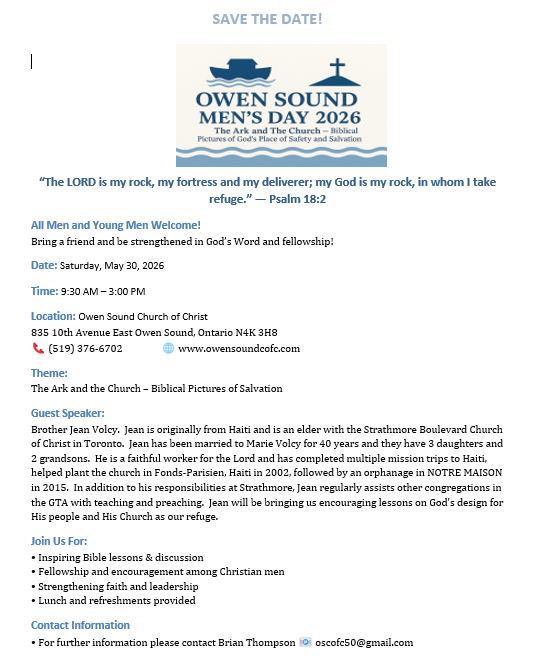The torture of the cross began with the condemned man carrying the crossbeam for his execution, to the killing grounds. It was a humiliating start to a drawn out and excruciating death. This is what we find Jesus doing in John 19:17. Flogged and beaten, there came a point when he could not go on and at which the soldiers “drafted” Simon of Cyrene to carry the cross for Him. The fact that this was a normal and legal procedure tells us how badly men suffered before being nailed to the cross (See Matt. 5:41.)
“As they led Jesus away, a man named Simon, who was from Cyrene, happened to be coming in from the countryside. The soldiers seized him and put the cross on him and made him carry it behind Jesus.” (Luke 23:26 NLT)
Considering all that Jesus had endured since His arrest in Gethsemane, it is not difficult to imagine Him falling under the load. But there was something else involved: carrying the cross was a sign of guilt, and our Lord was not guilty!








Thousands of Jews came to Jerusalem from other nations to celebrate the feasts (Acts 2:5-11), and Simon was among them. He had travelled more than eight hundred miles from Cyrene in northern Africa, (modern day Libya) to celebrate Passover.
But why did the Gospel writers include this fact?
It might have been that this same Simon, would later become well-known in the early church. The mere mention of his name added further historical evidence.
We have good reason to believe that Simon was converted because of this encounter with Jesus. Mark identified him as “the father of Alexander and Rufus” (Mark 15:21), two men that Mark assumed his Roman readers would know. A Christian named Rufus was greeted by Paul in Romans 16:13, and it is possible that he was the son of Simon of Cyrene. Apparently Simon and his two sons did become well-known Christians and were held in honour in the church.
But perhaps there were more reasons than just this for Luke’s inclusion of Simon.
Let me make some suggestions.
- Jesus was served by a foreigner, or least by a citizen of a foreign land. We don’t know if he was Jewish or Gentile because the name Simon was common among both groups. Yet what we do know is that the Gospels draw attention to his foreign origin.
- Luke is the only one of the Gospels that says Simon carried the cross behind Jesus. All the other Gospels that mention this just say that he carried it. Did Luke want us to remember that Jesus himself had taught that “If anyone would come after me, let him deny himself and take up his cross daily and follow me”? (Luke 9:23) By including these particular details, did Luke mean to project a graphic portrayal of what discipleship is?
- Then things really get interesting. For if Luke chose this event as an example of discipleship, it suggests that there are unexpected aspects of cross-bearing that we do not get to choose. Simon was a real historical person, who walked onto the scene at just the right time to share in Christ’s sufferings. Having chosen to follow Jesus, we still don’t always choose the moments of our suffering. These come upon us randomly, unexpectedly, frighteningly, painfully and in ways that are heavy to bear. We must expect sudden suffering.
- Most of us might assume that the Romans were legally allowed to force others to carry the cross for the condemned, was an act of compassion for the benefit of prisoners too weak to carry on. Yet it may instead have been their way to insure that no one died on their way to the cross, depriving the ‘law’, it’s full measure of torture. Pilate had commanded the soldiers to crucify Jesus. Allowing him to die on the way, simply would not do. Matthew Henry suggests this in his commentary. Forcing Simon to carry the cross was the very opposite of compassion. In this way, Jesus was kept alive for the cross.
Whether or not Luke intended one or all of these suggestions, what we do know is this:
- Simon was a real historical person, and was there at this critical moment in history. He was a foreigner, an African, who served Jesus in his final hour.
- Carrying the cross while following Jesus, combines the pain and the beauty of our call to discipleship. Intended or not, it is an apt image for disciples everywhere.
- Seemingly random calls to suffer for Jesus are often sudden and costly.
- Simon’s help lifted the burden from Jesus, but it was all so temporary. It ensured that Jesus made it to Golgotha and finished the course set before him by his Heavenly Father. In the end, the cross that Simon carried was the one upon which Jesus breathed his last.
Let us comfort ourselves with the thought that in our case and in Simon’s, the cross that we are called to carry belongs to Jesus. Jesus calls us to faith in him and to godly living. It is for these that we suffer as he did. How delightful for us to carry His cross, in His name and for His glory. May our love for him and thankfulness to him grow from day to day.
Port Colborne
